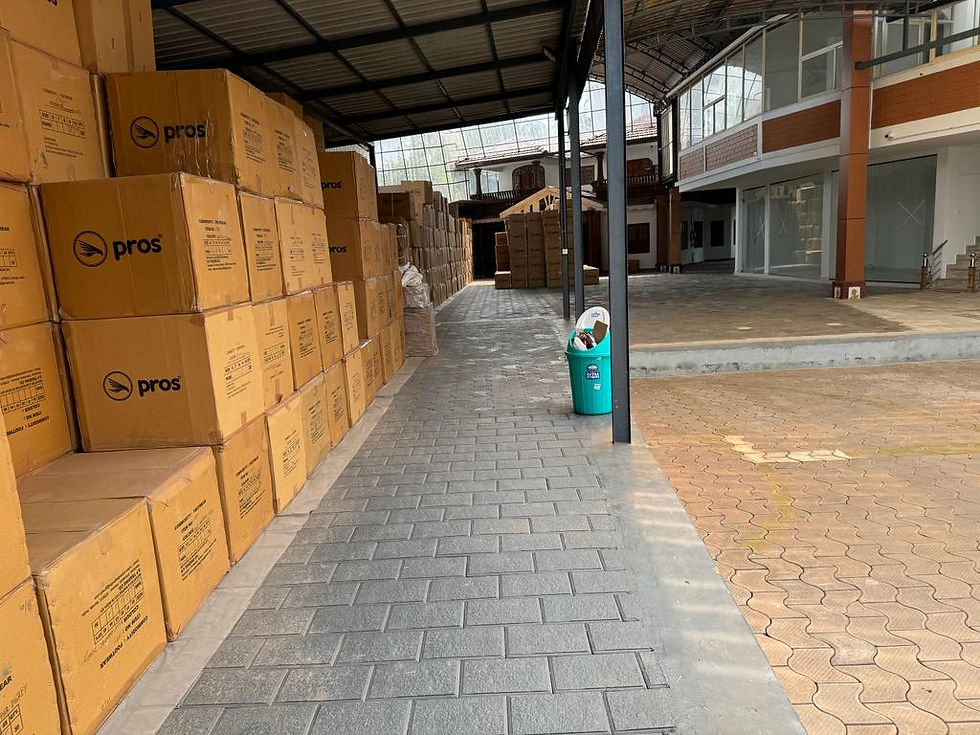Innovations in Footwear Manufacturing: A Comprehensive Guide to Ethylene Vinyl Acetate (EVA) Methodology - Educational Content
- Pros Correspondant

- Feb 4, 2024
- 2 min read
Introduction:
Footwear manufacturing has evolved significantly over the years, with a focus on materials that offer enhanced comfort, durability, and performance. One such revolutionary material is Ethylene Vinyl Acetate (EVA), a copolymer that has gained widespread popularity in the production of footwear. This article explores the high-ranking educational aspects of EVA footwear manufacturing methodology, shedding light on its unique properties, processing techniques, and the advantages it brings to the footwear industry.
I. Understanding Ethylene Vinyl Acetate (EVA):
A. Composition and Properties:
EVA is a copolymer of ethylene and vinyl acetate, known for its exceptional flexibility, low-temperature toughness, and resistance to UV radiation. The vinyl acetate content in EVA can be varied, allowing manufacturers to tailor the material's properties according to specific footwear requirements.
B. Versatility in Design:
EVA's versatility stems from its ability to be molded into various shapes and thicknesses, making it an ideal material for both midsoles and outsoles. Its lightweight nature ensures that footwear remains comfortable for extended periods, addressing the needs of consumers seeking functionality without sacrificing style.
II. EVA Footwear Manufacturing Methodology:
A. Injection Molding Process:
EVA footwear manufacturing predominantly relies on the injection molding process. The granular EVA material is melted and injected into molds, creating precisely shaped components such as midsoles and outsoles. This method allows for intricate designs, consistent quality, and cost-effective production.
B. Compression Molding:
An alternative method involves the use of compression molding, where EVA sheets are placed into molds and subjected to heat and pressure. This technique is preferred for certain footwear applications, offering flexibility in design and reducing production time.

III. Advantages of EVA Footwear:
A. Enhanced Comfort:
EVA's cushioning properties make it a preferred choice for midsoles, providing superior shock absorption and comfort. This is particularly beneficial for athletes and individuals who engage in prolonged physical activities.
B. Durability and Longevity:
The inherent toughness of EVA makes footwear manufactured with this material resistant to wear and tear, ensuring a longer lifespan for the product. This durability contributes to the overall value proposition for consumers.
C. Lightweight Design:
EVA's lightweight composition not only adds to the comfort of the footwear but also addresses the growing demand for lighter and more agile shoes. This is especially crucial in sports and outdoor activities where every ounce matters.
D. Cost-Effectiveness:
The efficiency of the manufacturing processes, such as injection molding, coupled with the relative affordability of EVA, makes it a cost-effective choice for footwear production. This affordability allows manufacturers to offer high-quality products at competitive prices.
The utilization of Ethylene Vinyl Acetate (EVA) in footwear manufacturing has brought about a paradigm shift in the industry. Its unique properties, versatile design possibilities, and cost-effectiveness make EVA a preferred choice for both manufacturers and consumers alike. By understanding the intricacies of EVA methodology, stakeholders can continue to innovate and elevate the standards of modern footwear, ensuring a perfect blend of comfort, performance, and style.



Comments